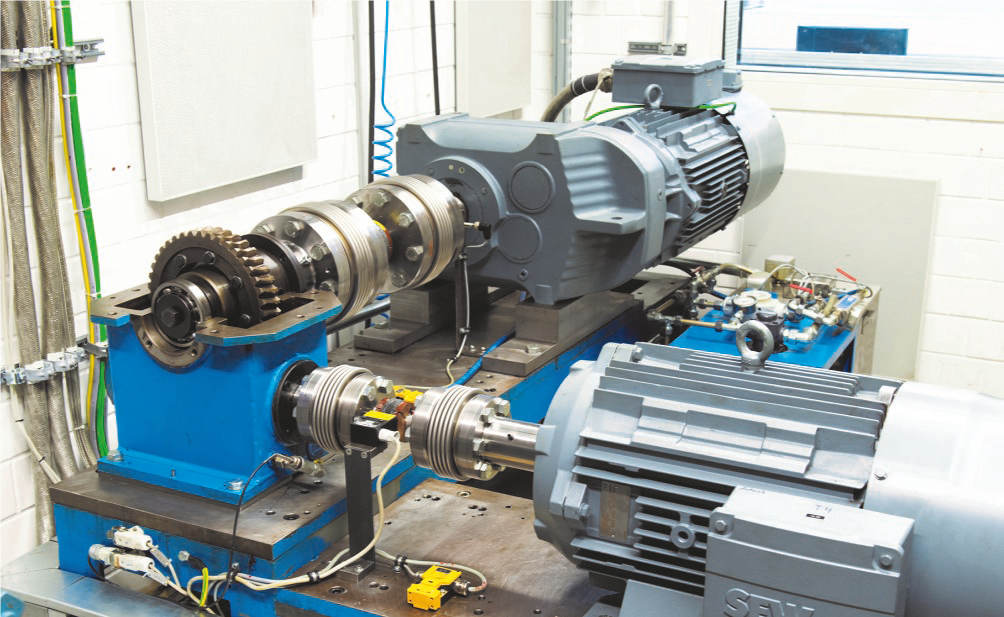Worm Gears
Worm gears offer the possibility of realising high transmission ratios in only one stage. Thus a considerably high axial sliding occurs, leading to reduced efficiencies. Due to the large overlap, worm gears have low noise and vibration levels. Self-locking and selfbraking are possible by appropriate choice of the gear
geometry. The application of worm gears as power gearboxes is mostly limited by wear, pitting or limited efficiency. Other material combinations than the conventional combination of steel and bronze are more endangered by scuffing.
Both electrically and hydrostatically loaded test rigs are available for the determination of sliding wear, pitting and scuffing of common worm gear bronzes, as well as brass, grey cast iron and spheroidal cast iron.
The results are represented as specific wear or scuffing damage in correlation to the drive torque or as pitting growth over the number of load cycles.
The high percentage of sliding for worm gears causes higher power losses with increasing transmission ratio. With torque measurement shafts, efficiency tests for every operating condition can be performed with these test rigs.
The tooth root load-carrying capacity of worm gears can be determined within pulsator tests. Therefore, a special device has been developed, which allows a load to be imposed on the worm wheel teeth through the corresponding worm shaft.

